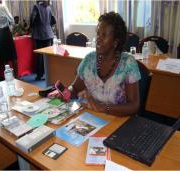12 Opportunities for Mobile Telecommunications in Agriculture
In their recent report “Connected Agriculture,” Vodafone and Accenture with support from Oxfam outlined 12 opportunities that mobile telecommunication has for farmers.
The opportunities were identified as ‘the most important’ through stakeholder consultations and are grouped into four categories.
Category I: Improving Access to Financial Services through increasing access and affordability to these services tailored for agricultural purposes. The opportunities under this category include:
1. Mobile Payment Systems which offer people without access to financial services an affordable and secure way to transfer and save money using their mobile phones.
2. Micro-Insurance System that protects farmers against losses when bad weather harms their harvest, encouraging them to buy higher-quality seeds and invest in fertilizer and other inputs.
3. Micro-Lending Platforms that connect smallholders in developing countries with individuals elsewhere willing to provide finance to help the farmers to buy much-needed agricultural inputs.
Category II: Provision of Agricultural Information i.e. delivering information relevant to farmers, such as agricultural techniques, commodity prices and weather forecasts, where traditional methods of communication are limited. The opportunities under this category are:
4. Mobile Information Platforms that link farmers to receive texts with news and information that help to improve the productivity of their land and increase their incomes.
5. Farmer Helplines that connect farmers to agricultural experts who can provide quick and accurate answers to agricultural queries
Category III: Improving Data Visibility for Supply Chain Efficiency. This is done through optimizing supply chain management across the sector, and delivering efficiency improvements for transportation logistics. The opportunities here include:
6. Smart Logistics that use mobile technology to help distribution companies manage their fleets more efficiently – reducing costs for farmers and distributors, cutting fuel use and related carbon emissions and potentially preventing food losses.
7. Traceability and Tracking Systems that are use to track individual food products through the supply chain from grower to retailer.
8. Mobile Management of Supplier Networks that could use mobile phones to manage their networks of small-scale growers and help field agents collect information.
9. Mobile Management of Distribution Networks such as agricultural inputs like seeds, fertilizer and crop protection products could use mobile to gather sales and stock data, improving availability for farmers and increasing sales.
Category IV: Enhancing Access to Markets i.e. by enhancing the link between commodity exchanges, traders, buyers and sellers of agricultural produce. The opportunities for mobile telecommunications are:
10. Agricultural Trading Platforms that use mobile technologies to link smallholder farmers directly with potential buyers thereby helping them to secure the best price for their produce, as well as promoting investment in agriculture and reducing food losses.
11. Agricultural Tendering Platforms that allow mobile technologies for submitting and bidding on tenders for food distribution, processing and exporting could make the agricultural supply chain more competitive and efficient.
12. Agricultural Bartering Platforms could use mobile technologies to help agricultural workers in rural communities exchange goods and services and improve communities’ livelihoods.
Some of the benefits that could be obtained from these opportunities are monitoring resources and tracking products; unlocking productivity potential while helping to manage the impacts of increased production, such as increased water use and greenhouse gas emissions; increasing agricultural income by around US$138 billion across 26 of Vodafone’s markets in 2020; helping to meet the challenge of feeding an estimated 9.2 billion people by 2050; helping to cut carbon dioxide emissions by approximately 5 mega tonnes (Mt) in these markets; and reducing freshwater withdrawals for agricultural irrigation by 6%, with significant savings in water-stressed regions. These benefits assume there will be around 549 million mobile connections to relevant services in 2020.






































